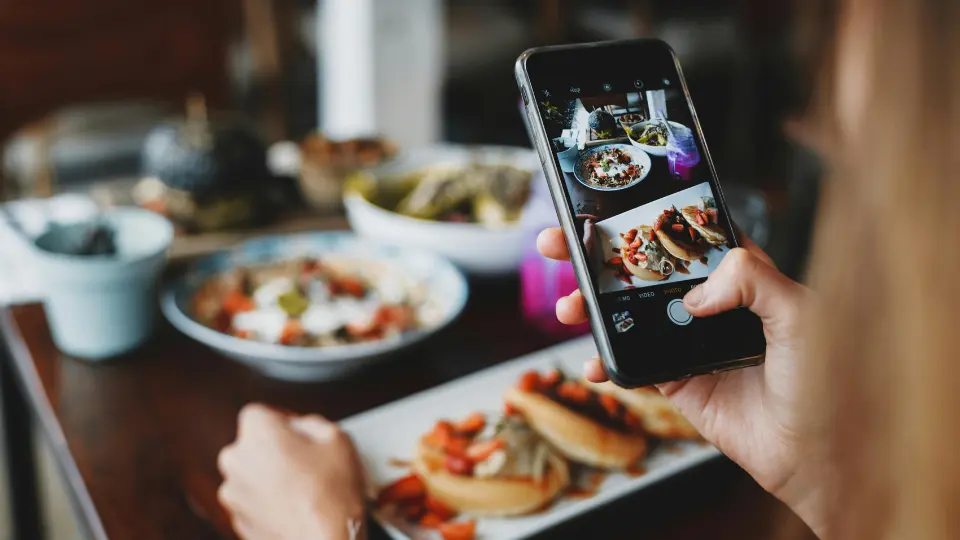Marketing is filled with tough decisions, especially when deciding between different strategies to reach your audience. Paid and organic marketing are two fundamental approaches, each with its own benefits and drawbacks.
While paid marketing often delivers faster results, organic marketing focuses on building lasting relationships that can sustain your business over time.
Both strategies are essential in today’s competitive landscape, and leveraging a combination of the two can help you achieve the best results.
In this article, we will explore the differences between paid and organic marketing, provide examples of each, and discuss which approach might be better for your business.
What are Organic vs. Paid Social Media?
There are two main social media marketing strategies: paid social and organic social. Paid social is when a brand pays for advertising on social media platforms, while organic social is when a brand uses free social media tools to build and engage with its online following.
Paid social is a great way to break through algorithms and connect with audiences that are unlikely to discover you otherwise. It’s especially useful for promoting content that’s converting well and reinforcing the messaging you convey through organic social.
You can also use paid campaigns to tap into the precise shoppers you want to reach through audience targeting.
On the other hand, organic social posts are a great way to engage directly with customers, manage your reputation, and encourage user-generated content.
It’s also free and provides an incredible opportunity to promote your company and products to a loyal audience while extending your network through social sharing. It’s important to note that paid and organic social strategies work best in tandem.
To make your marketing dollars go further, use organic social and other marketing efforts to determine which content is most popular with your audience before running it as a promotion. For both paid and organic social posts, keep track of analytics to determine the most effective days and times to post.
Paid Marketing Examples
As mentioned earlier, paid marketing often refers to paid ads. However, there are a few different types of paid ads out there. One example is a paid search ad. This type of ad shows up in Google search results (or whichever search engine you’re using).
It looks like a regular search result, but it has an “ad” label in the corner. If you want to appear on Google, you can set up your ads in Google Ads and even bid on specific keyword searches you want to rank for.
Another example of a paid ad is a display ad. When you invest in display ads, they typically appear on third-party websites, which are websites you don’t own.

You’ve probably seen them before—they look like bars or boxes that usually show up in the margins of the website. They may have an image or two with some convincing text aimed at getting you to take action.
You can even run paid ads on social media platforms. For example, Facebook and LinkedIn both let you create paid posts that show up in users’ feeds.
When users click on any of these types of ads, they’ll be taken to a destination where you encourage them to complete a specific action, often referred to as a conversion.
Organic Marketing Examples
One of the best examples of organic marketing is search engine optimization or SEO. SEO is where you create content on your website and then optimize that content to create a great experience for people and rank highly in search engines like Google.
Since you have to earn your spot in the rankings by creating quality content, it can be a bit of work, but it’s also totally free—there’s no fee for ranking organically in Google.

Of course, if you invest in services from a digital marketing agency, you’ll need to spend some of your marketing budget. But the right team can get you amazing results that are worth the investment.
Social media can also be organic marketing. We mentioned sponsored posts, but not all social media posts have to be paid. You can also just create a regular account for your company and post there.
Those posts may not get promoted to the top of users’ feeds, but if they’re engaging, people will still find them—and, after all, they’re free to create.
Learn more about organic social media marketing or seek help from a marketing expert.
Organic vs Paid Marketing: Which is Better?
So, we’ve covered the differences between the two types of marketing. Now the question is, which one is better: organic or paid marketing? Well, if you haven’t already guessed it, the best option is to do what works best for your business. In some cases, you’ll want to use both.
You don’t want to limit yourself to one marketing channel. In fact, using multichannel marketing is one of the best things you can do for your business. Multichannel marketing means using multiple channels to reach your target audience and grow your business.
It allows you to engage with a much wider audience and convert more people into customers.
Think about it like this—if you only use paid ads, anyone who doesn’t respond well to paid ads won’t ever convert. But if you use both paid ads and organic content, you can reach people who respond well to each one.
Plus, you can ensure people don’t forget about you as they move from social media to Google, to review sites, and wherever else they frequent online. You can move people in your audience from casual visitors to loyal customers when you have a presence on the channels they use most frequently.
Balancing the different areas of multichannel marketing may seem overwhelming, but don’t worry. There are tools out there to help you easily manage all your different marketing channels in one place. Using multiple tools, you can tie your different marketing channels together.
So, you could run a single campaign across your website, paid search ads, social media posts, and email marketing all at once. The great thing about that is you can link each channel to the others, so users can bounce from one place to another and still be engaged with your business.
Basically, you don’t have to choose between organic or paid marketing. You can use them both together and end up driving way more conversions—if that type of strategy works for your business. There’s no one-size-fits-all marketing solution. We can just tell you that we’ve seen great success when using a multichannel strategy.
If you do not have a good understanding of paid marketing then you need to take the help of a paid marketing expert because without experience success will not come. Only money will be spent.
Check out Paid Social Media Marketing Expert here.
Summary
Marketing is often a balancing act between organic and paid strategies. Organic marketing, like SEO and social media, helps build lasting relationships and can provide ongoing traffic and engagement over time.
Paid marketing, on the other hand, offers faster results by placing your brand in front of a targeted audience quickly, but it requires continuous investment.
The most successful marketing strategies often incorporate both approaches, using paid ads to amplify content that has already proven successful through organic channels.
By combining the strengths of both organic and paid marketing, businesses can achieve a more robust and effective marketing strategy, driving long-term growth and success.

